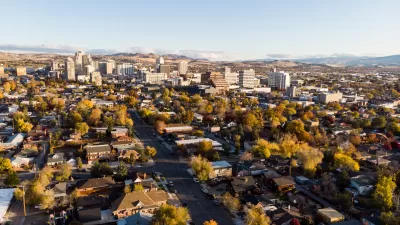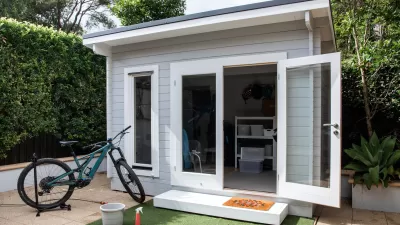Easing ADU regulations has led to some new construction in the Twin Cities, but the additional units have made a small dent in the area’s affordable housing problem.

Jessica Lee and Greta Kaul take a closer look at accessory dwelling units in the Twin Cities and find that the numbers are still low. "Since 2015 — the first year in which Minneapolis residents could apply for permits following a new ordinance by the City Council — construction peaked in 2017 with 38 new ADUs. In total, the city has permitted 137 ADUs. They are on about 0.2 percent of single-family lots." St. Paul allowed ADU construction starting in 2016, and four have been built there.
The challenges for interested homeowners in the Twin Cities are similar to ones found in other cities: high construction costs, confusing regulations and permitting processes, and difficulties obtaining loans. Both cities have taken steps to make the process easier. St. Paul, for example, now allows ADU construction throughout the city rather than just in a restricted area.
The role of ADUs in boosting available affordable housing in the Twin Cities remains to be seen, report Lee and Kaul:
In Portland there are ADUs on about 1.5 percent of single-family home lots, [Sarah] Berke said. In order to hit that benchmark Minneapolis would need about 1,200 ADUs, St. Paul would need 888, and the Twin Cities region would need about 11,000, according to a MinnPost analysis of MetCouncil data.
Still, local officials remain confident that ADU construction will pick up in the coming years with zoning reform and more calls for diversification of housing stock and increased density.
FULL STORY: Accessory dwelling units were supposed to help ease the Twin Cities’ housing crunch. How’s that working out?

Maui's Vacation Rental Debate Turns Ugly
Verbal attacks, misinformation campaigns and fistfights plague a high-stakes debate to convert thousands of vacation rentals into long-term housing.

Planetizen Federal Action Tracker
A weekly monitor of how Trump’s orders and actions are impacting planners and planning in America.

In Urban Planning, AI Prompting Could be the New Design Thinking
Creativity has long been key to great urban design. What if we see AI as our new creative partner?

Baker Creek Pavilion: Blending Nature and Architecture in Knoxville
Knoxville’s urban wilderness planning initiative unveils the "Baker Creek Pavilion" to increase the city's access to green spaces.

Pedestrian Deaths Drop, Remain Twice as High as in 2009
Fatalities declined by 4 percent in 2024, but the U.S. is still nowhere close to ‘Vision Zero.’

King County Supportive Housing Program Offers Hope for Unhoused Residents
The county is taking a ‘Housing First’ approach that prioritizes getting people into housing, then offering wraparound supportive services.
Urban Design for Planners 1: Software Tools
This six-course series explores essential urban design concepts using open source software and equips planners with the tools they need to participate fully in the urban design process.
Planning for Universal Design
Learn the tools for implementing Universal Design in planning regulations.
planning NEXT
Appalachian Highlands Housing Partners
Mpact (founded as Rail~Volution)
City of Camden Redevelopment Agency
City of Astoria
City of Portland
City of Laramie





























